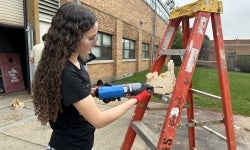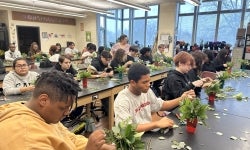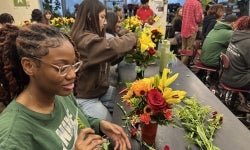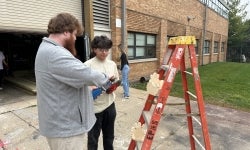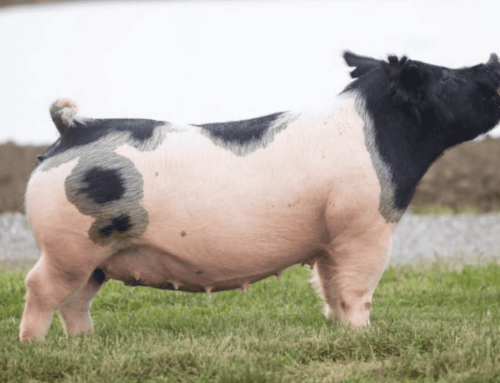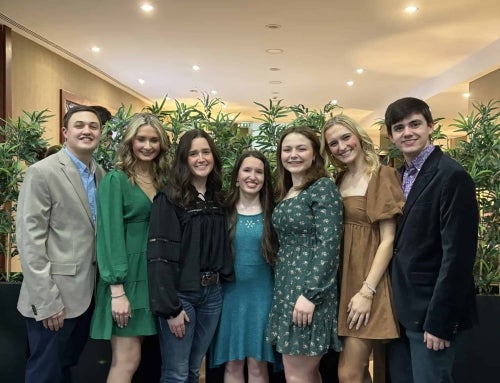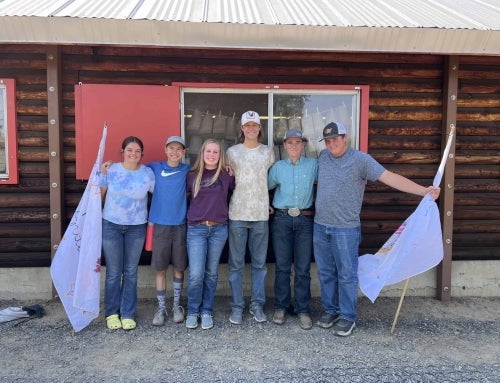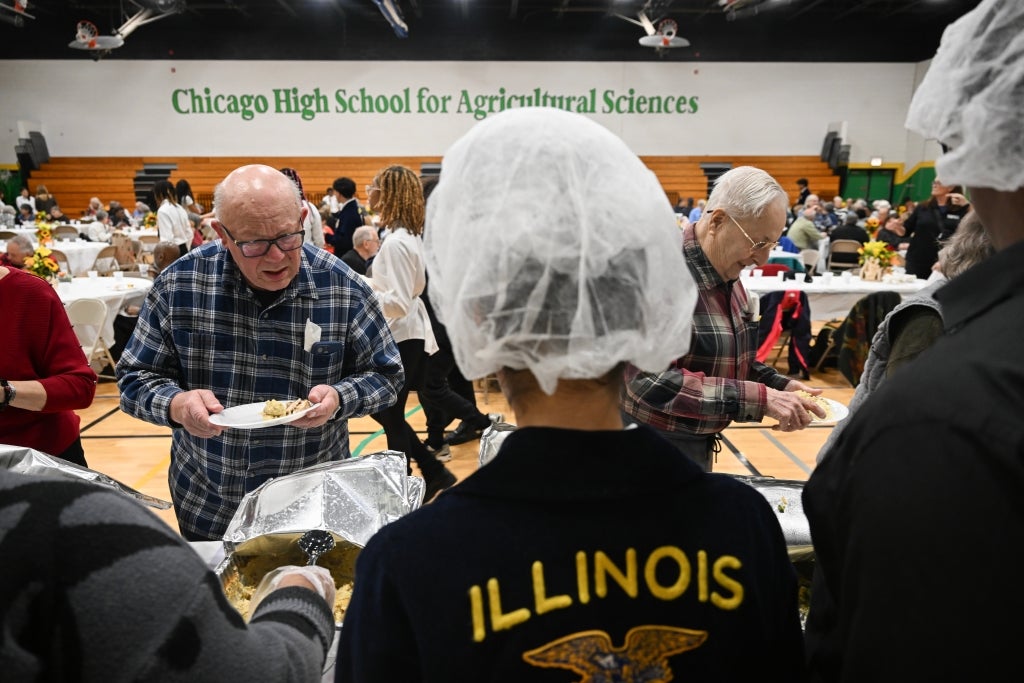
A peek behind the serving table at the Chicago High School for Agricultural Sciences.
How did the Chicago Ag Sciences FFA Chapter serve its community this Thanksgiving?
Every year, the Chicago High School for Agricultural Sciences (CHSAS) hosts a Thanksgiving dinner for the 19th Ward. People from the neighborhood were invited to attend this formal event. Throughout the dinner, attendees could talk with current Chicago Ag Sciences FFA members about their experiences and their school’s agricultural education program.
This dinner encourages members to engage with the people in their community and educate them about the different activities they host on campus, such as where the dinner’s food came from and how they prepared it.
The food served included greens, mashed potatoes, macaroni, and pumpkin pie. Members baked more than 80 pies, peeled 100 pounds of sweet potatoes, and used more than 100 pumpkins and more than 30 pounds of cranberries for the sauce. It took them two or three days to prepare these dishes for more than 350 people who live in Mount Greenwood, Ill.
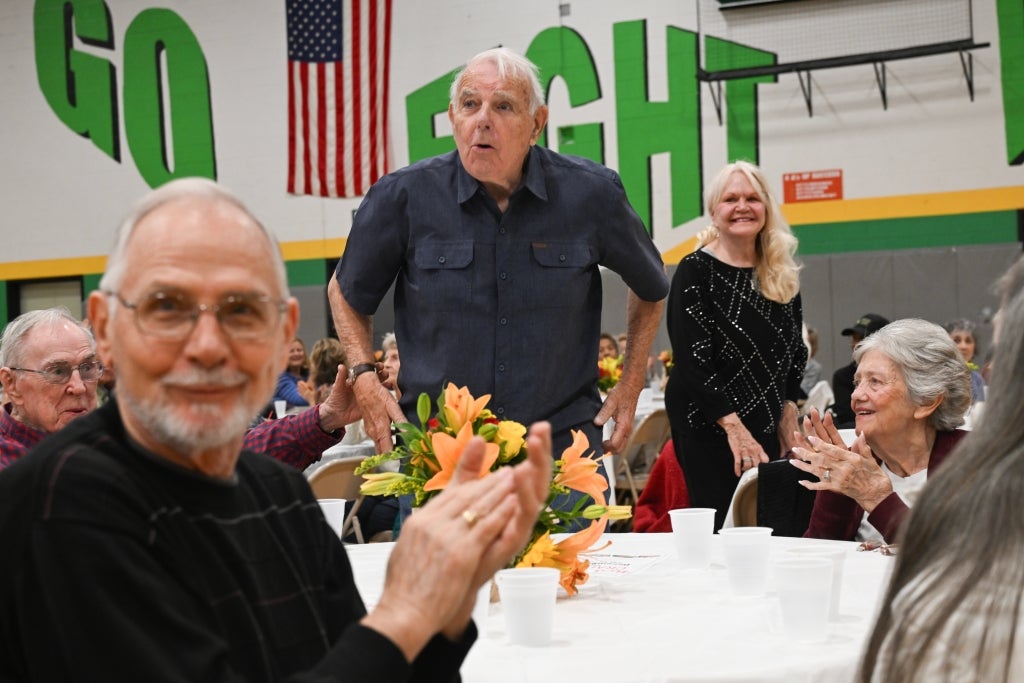
A round of applause begins after keynote speaker Matt O’Shea from the 19th Ward Alderman in Chicago finishes his speech.
“We might have our struggles, but actually giving back and seeing those smiling faces is the main thing I want to take away from this,” says Egypt West, a CHSAS senior currently studying in the food science pathway.
Students’ Participation
Food science pathway students at CHSAS, including West, focus on the production and chemistry of food.
The school recently hired Michelle Sandifer, a professional chef from a senior citizen home named Smith Village, to visit and help students make the food. She guided them in the overall production and preparation of the turkey.
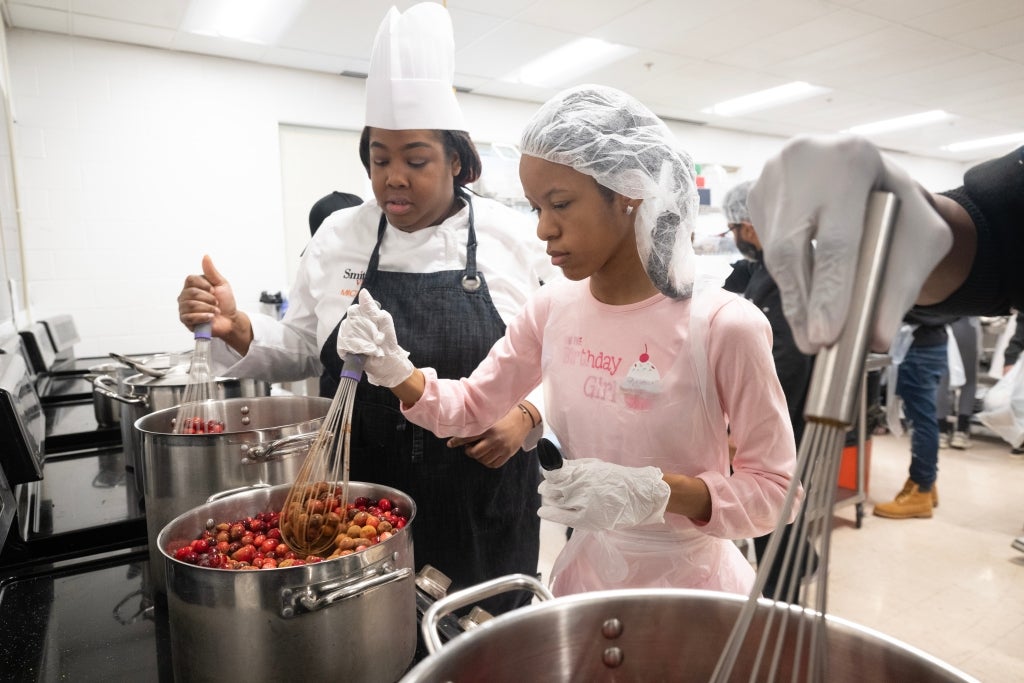
Chef Michelle Sandifer (left) assists junior food science pathway student Simone Shelton (right).
Additional Pathway Involvement
The animal science pathway raised two dozen turkeys and grew vegetables that were used for the Thanksgiving dinner dishes. The school has more than 70 acres of land and is the last fully-operating farm in the city of Chicago.
Mechanical technology students, on the other hand, built turkey-shaped flower holds out of wood, while horticulture students created floral arrangements for the occasion.
- Junior Ag Mech Tech student Kaitlyn Brown
- Junior Horticulture Pathway class
- Senior Horticulture Pathway class
- Ag Mech Tech Instructor Mr.Creed and Junior Pathway student Samuel Flores
This event is a great way for all the pathways at CHSAS to work together to serve their community and interact with other sectors in agriculture for one purpose.
Overall, this experience helped students improve skills such as food production, networking, and learning how to serve their community.


